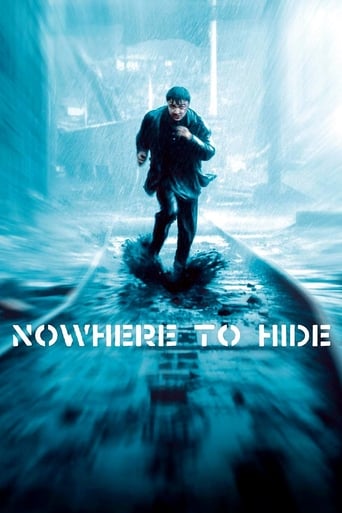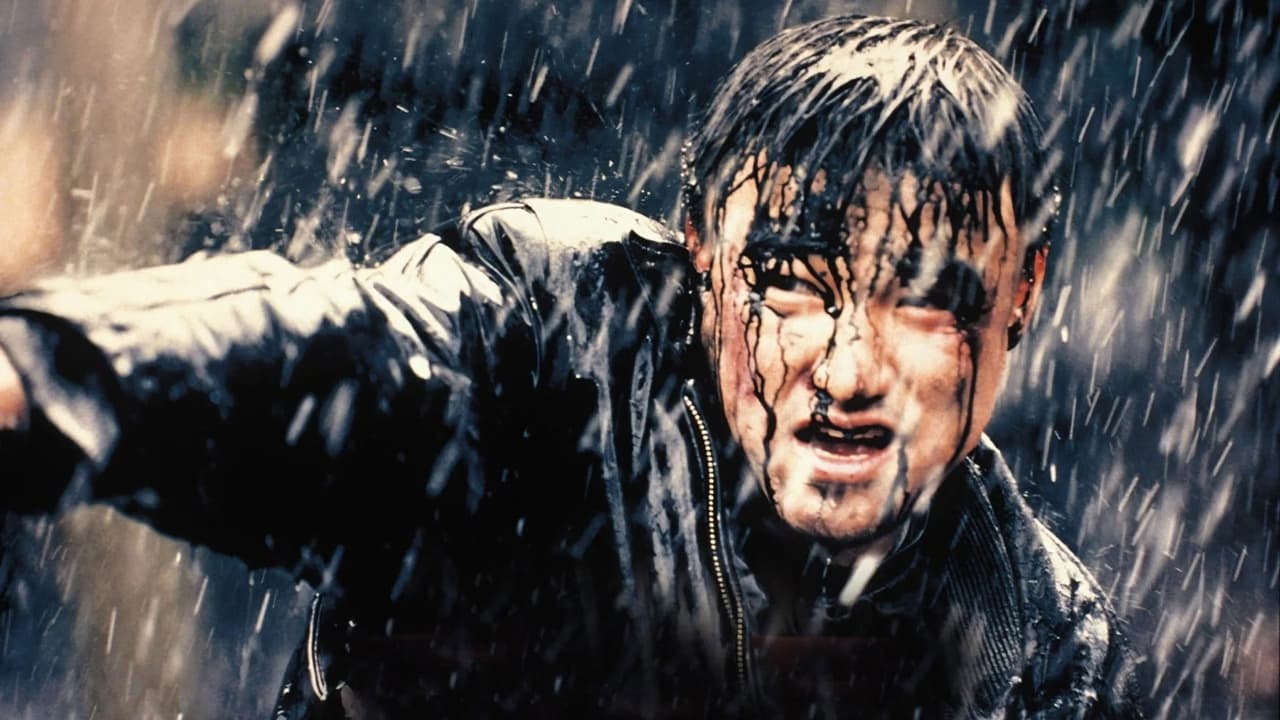stephen-morton
"Nowhere to Hide" is a film unlike any other I have seen, and likely unlike any you have seen either. It is a film alive with the possibilities of cinema, and not afraid to stretch the boundaries between pulp and art.The story centers on a detective named Woo, and his partner, Kim. Woo is a hard-living bulldog of a cop with not a little Popeye Doyle in him--he even wears a funny squashed cap, though it is a fishing hat rather than a porkpie. Kim is a by-the-book family man. Together, they attempt to track down a murderer over the course of several weeks. The plot is little more than a succession of action, chase, and stake-out scenes as they work their way through the killer's accomplices until they find the man himself. Their investigation is accomplished through plenty of illegal beatings and searches-without-warrants, but somehow the characters remain likable and entertaining to watch, due largely to the strong, theatrical performance of Park Joong-hoon in the central role. Humor is also sprinkled liberally throughout, both brilliant physical gags and a few knowing verbal jokes, creating a movie full of action and fun.But the film is only really about this plot to the extent that it allows the director to play around with the possibilities of film-making. Lee takes great joy in cutting up action sequences in new and exciting ways, crafting a style somewhere between John Woo and Wong Kar-Wai in its brilliant use of the camera. He makes potentially simple sequences new and exciting through the use of slow motion, quick cuts, and "jump dissolves" in combinations never before seen. He goes back and forth between lovingly dwelling on falling leaves and snow flakes to slicing swords and swinging fists, endowing each with unique beauty and cool.The two stand-out sequences in the film are probably the first murder scene and the final showdown. The first murder takes place at "the 40 Steps" and attains a bizarre, haunting beauty against the background of bright yellow leaves and falling rain, all set to the BeeGee's early hit "Holiday." The final showdown is again in the rain, this time pouring down in steel sheets as Woo and the murderer face each other mano a mano. A strain of "Holiday" floats briefly through the soundtrack, as the character's fists fly super-fast then super-slow. (Incidentally, this scene was clearly an influence on the final fight in The Matrix Revolutions.)The film has been criticized for having an unclear plot and lacking character depth. These things are mostly missing, true, but it is only because the director deliberately chose not to focus on them. Here is how he describes the point of his movie:"In a Monet painting," Lee says, "the theme is not the water lily. The water lily is just the object to paint light upon. As it floats, we see its reflection on the water, and that is what we call painterly. My intention is the same. In this film, I wanted to show the filmic. The story and the characters are not the main focus of my film. Movement is. Movement enters the other elements in this film to create kinetic action."The film, then, should be viewed in this spirit and not as a simple action film. If you approach this movie as an exercise in innovative style and gleeful genre pastiche (the movie shows clear influence from John Woo, The French Connection, and Sergio Leone--including the harmonica line from Once Upon a Time in the West), you will find yourself awed and delighted. Looking for deeper meaning, however, is futile: the style IS the substance.
zimlich
"Nowhere To Hide" is absolutely one of the most visually stunning movies I've ever seen. Every scene is a cinematographic masterpiece. Myung-se Lee is a master of effectively using "particle storms" ... falling leaves, rain, snow, flowing sheets. Iparticularly like the ways he use contrast, high and low. While Lee uses high contrast, black & white scenes and low contrast, grainy shots, I like the contrast between scenes. I like the high contrast between innocent scene (falling leaves and the little girl hopping down the stairs) and violent scene that follows (hard rain and murder on the very same stairs). He effectively use low contrast between the good guys and the bad guys. Detective Woo's father told him, "If you don't want to become a gangster, you need to become a cop. This is a MUST SEE movie.
Gareth Hacking
I really enjoyed watching this film, I was on the edge of my seat most of the time.It's great to watch a film where the director is in love with the possibilities of film, making use of every trick in the cinematic book. This everything-and-the-kitchen-sink style seems popular in Asia as Tears of the Black Tiger had used a similar approach. Sure, the detective's are made out to be as vicious as the criminals they're chasing but I can't think of too many films that portrayed the police in a positive light (ok, I'll let you have 'Police Academy'). The only problems for me were the somewhat plodding pace between the action sequences and that the audience never got to know anything about Sungmin.
Sean Choi
Lee Myung-se is one of the most gifted directors of the contemporary "new wave" movement in Korean cinema. He is a director who's in love with the medium of film, and it shows in his dazzling Nowhere to Hide. The film's plot involves a standard cops and robbers chase, but that's not where its strength lies. This film doesn't bother itself much with "substance," e.g. richly developed characters with whom we can sympathize, a serious look at "the human condition," etc. Instead, Nowhere to Hide is all about style and the joy of making films. Lee's style is sort of an amalgamation of Wong Kar-wai (the visuals) and John Woo (the action), and Nowhere to Hide offers some sumptuous feasts for the eyes. To offer some salient examples: There is an early assassination sequence which is so beautifully shot and creatively edited that it plays out like an impressionist music video (and it also happens to be my favorite scene from any film of its year, 2000); There is a fight sequence which is done completely in shadows; And there is a final fist fight between a cop and robber in the rain that is wonderfully aesthetic. During many scenes of this film, Lee stretches, breaks, and otherwise "tweaks" the visual grammar of film to produce a work that is consistently challenging and thoroughly original. Seldom has "eye candy" been this sweet. This film might not have much by way of substance, but in terms of pure filmmaking craft and originality, it's pretty hard to beat.


 AD
AD




